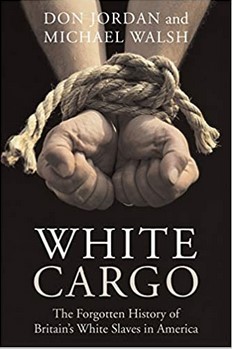
White Cargo: The Forgotten History of Britain's White Slaves in America 1/31/08 Edition
Indentured servitude in British America
Indentured servitude in British America
Jump to navigation Jump to search
Indentured servitude in British America was the prominent system of labor in British American colonies until it was eventually overcome by slavery.[1] During its time, the system was so prominent that more than half of all immigrants to British colonies south of New England were white servants, and that nearly half of total white immigration to the Thirteen Colonies came under indenture.[2] By the beginning of the American Revolutionary War in 1775, only 2 to 3 percent of the colonial labor force was composed of indentured servants.[3]
The consensus view among economic historians and economists is that indentured servitude became popular in the Thirteen Colonies in the seventeenth century because of a large demand for labor there, coupled with labor surpluses in Europe and high costs of transatlantic transportation beyond the means of European workers.[4][5] Between the 1630s and the American Revolution, one-half to two-thirds of white immigrants to the Thirteen Colonies arrived under indentures.[6] Half a million Europeans, mostly young men, also went to the Caribbean under indenture to work on plantations. Most indentures were voluntary, although some people were tricked or coerced into them.[7] A debt peonage system similar to indenture was also used in southern New England and Long Island to control and assimilate Native Americans from the 1600s through the American Revolution.[8]
Indentured servitude continued in North America into the early 20th century, but the number of indentured servants declined over time.[9] Although experts do not agree on the causes of the decline, possible factors for the American colonies include changes in the labor market and the legal system that made it cheaper and less risky for an employer to hire African slave labor or paid employees, or made indentures unlawful; increased affordability of travel to North America that made immigrants less likely to rely on indentures to pay travel costs; and effects of the American Revolution, particularly on immigration from Britain. In the Caribbean, the number of indentured servants from Europe began to decline in the 17th century as Europeans became aware of the cruelty of plantation masters and the high death rate of servants, largely due to tropical disease.[10] After the British Empire ended slavery in 1833, plantation owners returned to indentured servitude for labor, with most servants coming from India,[11] until the British government prohibited the practice in 1917.


